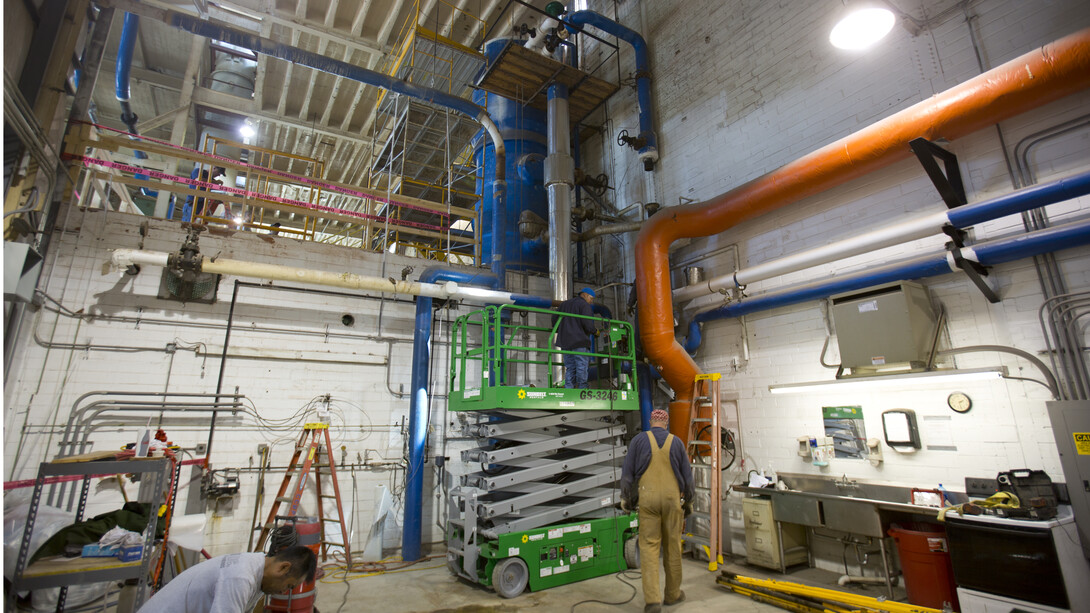
Downtime is busy time at the University of Nebraska–Lincoln’s utility plants.
While most of campus enjoys a brief intermission in student activity between the end of the spring semester and start of summer sessions, utility services employees are busy performing annual maintenance on UNL boilers and related steam distribution systems.
“With the reduction in student activity on campus, this is really the only time of the year that we can perform these maintenance activities,” said Charlie Griesen, utility project manager for Utility Services. “Actually, we have more projects in process at one time than ever before.”
UNL’s City Campus utility plant is off line this week and is scheduled to return to full service by May 11. Maintenance on the East Campus plant is scheduled for May 12-18.
Along with general maintenance of campus boilers — which are taken completely offline during the annual outages — the outage is allowing UNL crews to begin work on replacing a 78-year-old boiler deaerator. Other major projects including adding steam meters campus buildings, installing an isolation valve for Walter Scott Engineering Building, cleaning out accumulated silt in water storage tanks, replacing insulation on steam and water pipes, converting control panels from analog to digital systems, and moving and expanding a utility plant control room.
The deaerator is a device used to remove oxygen from water fed to steam-generating boilers. The oxygen must be removed as is causes corrosion within metal pipes and other metallic equipment linked to the campus steam system.
The single deaerator in the City Campus utility plant will be replaced with two systems, allowing a redundancy for the steam-generating system. The upgrade will stretch beyond UNL’s regular weeklong steam outage. When City Campus boilers go back online May 13, UNL will use a sparge tube and the chemical diethylhydroxylamine (DEHA) to temporarily remove oxygen from the steam system.
“DEHA is an efficient oxygen scavenger and will be used until the new deaerator is installed,” Griesen said. “We could use DEHA all the time, but we choose to run a deaerator because it reduces the number of chemicals necessary in the water for the steam system.
“Using the mechanical method versus chemical is better in terms of sustainability.”
The sparge tube — which works like a bubble bar in a fish tank — will pump steam into a storage tank of water, warming it before it is added to the steam distribution system.
This year’s outage is also allowing Utility Services to start adding steam meters to campus buildings. The project will begin with eight buildings that are large users of the steam generated at UNL utility plants.
Griesen said the meters allow the university to more effictively track the amount of steam being used within campus buildings. Over time, steam meters will be added to nearly every UNL building.
The dedicated utility plants on UNL’s City and East campuses produce steam and chilled water for campus heating and cooling needs. The facilities also monitor and control heating and cooling systems on Nebraska Innovation Campus.
The total building area served by UNL’s utility plants is approximately 9.4 million gross square feet. The plants could heat and/or cool approximately 5,000 single-family homes that are 2,000 square feet in area.
For more information on Utility Services at UNL, click here.








